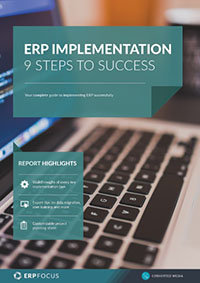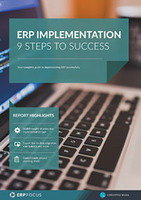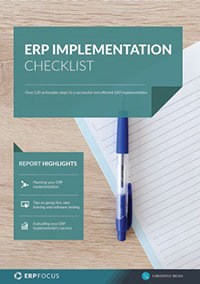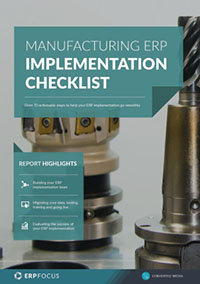Is Your IT Infrastructure Ready for ERP?
An ERP implementation is just as disconcerting to an IT department as it is to the rest of the organization. Transitioning the IT infrastructure for ERP takes empathy, a strong set of organizational skills, and patience for timing.
Build Your Team Carefully
The first phase to affect infrastructure is deciding who to assign to the ERP team. Ideally, these are your best and brightest; natural leaders who may enjoy peer respect without necessarily possessing an elevated job tile. These people should be selected for their ability to think creatively, to handle a demanding workload, and to teach others. During the design phase of an ERP implementation, things in IT are pretty normal. The legacy support teams are a little short handed, but otherwise, it is business as usual.
After blueprint design and gap analysis, a list of development objects (unavoidable customization needs) emerges, and more IT employees must be carved off to work on building those objects. These employees may have needed to receive outside education in advance, and that should be incorporated into the plan. This work flow must be carefully managed, because development objects must be completed in time to test - not just by go-live - and some development objects will be dependent on others. Begin involving other legacy support personnel in testing activities without redeploying them. This exposes them to what is happening, and some of the quick learners will be able to help at go-live.
Also during this phase the basis and security teams should be solidified. The basis team is the group of people that make sure various clients are loaded with the right software, that patches are applied effectively, that routine backup is performed, and that any regularly scheduled batch jobs occur without problems. The basis team should also be the traffic cop for reporting perceived system bugs back to the ERP vendor. Security administers system access by end user, always keeping segregation of duties issues in mind.
Make certain that the specialty skills within your IT organization – the web team, the EDI team, the data warehouse team, the hardware infrastructure group, etc. - interact with increasing frequency with the ERP team.
It’s All About...Timing
Whether you are engaged in a multi-phased ERP implementation, or a single big bang approach, the IT infrastructure readiness challenge remains the same: consistently moving resources away from legacy activities at the same rate that ERP activities are growing. Timing is everything. Transitioning resources too early or too late eliminates the value of a resource for a period of time, and it doesn’t take too many underutilized resources before the IT work load on one side of the fence has become unmanageable. The default position in a bottleneck has to be to let legacy work wait. If you wait long enough, the legacy need will go away by definition. And finally, have a plan that you can articulate for the rear guard of legacy support who will have an ever-increasing level of anxiety, fearing that they will be without a job after go live.
Free white paper

ERP Implementation: 9 steps to success
The 9 proven steps you should follow when implementing ERP

Featured white papers
-

ERP Implementation: 9 steps to success
The 9 proven steps you should follow when implementing ERP
Download -

ERP Implementation Checklist
Over 120 actionable steps to implementing a new ERP successfully
Download -

Manufacturing ERP Implementation Checklist
Over 70 actionable steps to rolling out new manufacturing ERP software
Download
Related articles
-

Change management for ERP implementation: a case study
A real-world example of the benefits of weaving change management into the fabric of an ERP imple...
-

CMMC Compliance: What Aerospace and Defense Manufacturers Need to Know
Key insights on CMMC compliance, deadlines, and securing DoD contracts with CMMC 2.0 certificatio...
-

A guide to the ERP life cycle
The stages of the ERP life cycle

